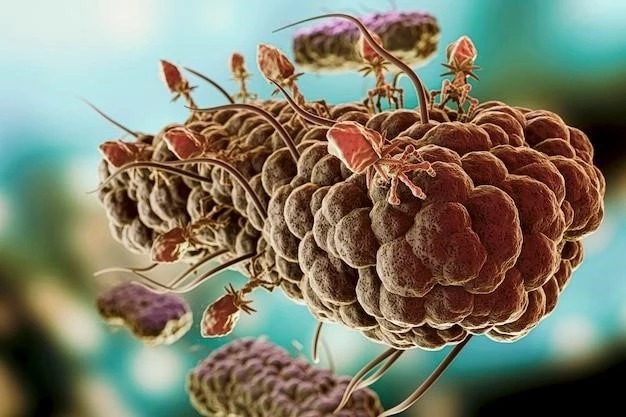Comprehensive Overview of Arrhinia
Causes of Arrhinia
Treatment options for Arrhinia
Living with Arrhinia
Surgical procedures for Arrhinia
Genetic factors of Arrhinia
Psychological impact of Arrhinia
Support groups for Arrhinia patients
Research developments in Arrhinia treatments
Understanding Arrhinia
Arrhinia is a rare congenital disorder characterized by the absence of a nose. The condition can vary in severity and may be isolated or associated with other craniofacial anomalies. Arrhinia can significantly impact an individual’s quality of life due to challenges with breathing‚ smell‚ and facial aesthetics. Understanding the physical and emotional implications of Arrhinia is crucial for providing appropriate care and support to affected individuals.
Causes of Arrhinia
Arrhinia can result from various factors‚ including genetic mutations‚ abnormal development during embryogenesis‚ certain environmental exposures during pregnancy‚ or as part of a syndrome. Mutations in specific genes involved in facial development can lead to the absence of a nose. Understanding the underlying causes of Arrhinia is essential for accurate diagnosis and personalized treatment plans for affected individuals.
Treatment Options for Arrhinia
Treatment for Arrhinia is complex and may involve a multidisciplinary approach. Options include surgical reconstruction to create a nasal structure‚ prosthetic devices for functional and aesthetic purposes‚ and interventions to address associated health issues. The choice of treatment depends on the individual’s age‚ overall health‚ severity of the condition‚ and personal preferences. Collaborating with a team of specialists is essential to tailor a comprehensive treatment plan that addresses the unique needs of each Arrhinia patient.
Living with Arrhinia
Living with Arrhinia can pose challenges in daily life‚ including difficulties with breathing‚ altered sense of smell‚ and potential social stigmatization. Patients may require ongoing medical care‚ support‚ and accommodations to manage the physical and emotional aspects of the condition. Developing coping strategies‚ seeking social support‚ and engaging in activities to promote self-esteem and well-being are important aspects of adapting to life with Arrhinia. Education and awareness within the community can also help foster understanding and acceptance of individuals living with this rare condition.
Surgical Procedures for Arrhinia
Surgical intervention is a primary treatment option for Arrhinia. Procedures may involve reconstructive surgery to form a nasal structure using tissue grafts‚ cartilage‚ or synthetic materials. Surgeons aim to enhance facial symmetry‚ restore nasal breathing function‚ and improve aesthetic appearance. Pre-operative planning‚ post-operative care‚ and long-term monitoring are crucial aspects of surgical management for Arrhinia. Patients should work closely with a skilled surgical team to discuss treatment goals‚ expectations‚ and potential outcomes to make informed decisions about undergoing reconstructive procedures.
Genetic Factors of Arrhinia
Arrhinia has been linked to genetic mutations affecting the development of facial structures during embryogenesis. Specific genes involved in craniofacial development‚ such as FOXE1 and SHH‚ may play a role in the pathogenesis of Arrhinia. Understanding the genetic basis of the condition is crucial for genetic counseling‚ early detection‚ and potentially targeted therapies in the future. Advances in genetic research continue to shed light on the complex mechanisms underlying Arrhinia‚ paving the way for personalized approaches to diagnosis and management based on an individual’s genetic profile.
Psychological Impact of Arrhinia
Arrhinia can have profound psychological effects on individuals‚ impacting self-image‚ self-esteem‚ and social interactions. Psychological support and counseling play a crucial role in helping patients cope with the emotional challenges associated with the condition. Addressing concerns related to body image‚ identity‚ and social acceptance is essential in promoting mental well-being and quality of life for individuals with Arrhinia. Additionally‚ raising awareness about the psychological impact of the condition among healthcare professionals and the broader community can contribute to a more holistic and supportive care environment for affected individuals.
Support Groups for Arrhinia Patients
Support groups for Arrhinia patients offer valuable resources for emotional support‚ information sharing‚ and community connection. These groups provide a safe environment for individuals with Arrhinia to discuss their experiences‚ challenges‚ and triumphs with others who understand their unique journey. Peer support‚ education‚ and advocacy are central components of support groups‚ empowering patients to navigate their condition more effectively and enhance their overall well-being; Participation in these groups can foster a sense of camaraderie and solidarity among individuals affected by Arrhinia‚ promoting a sense of belonging and resilience.
Research Developments in Arrhinia Treatments
Ongoing research in Arrhinia treatments is focused on advancing surgical techniques‚ exploring innovative prosthetic solutions‚ and investigating genetic therapies to address the underlying causes of the condition. Collaborative efforts between clinicians‚ researchers‚ and geneticists aim to improve treatment outcomes‚ enhance patient quality of life‚ and potentially prevent Arrhinia in future generations. Clinical trials‚ molecular studies‚ and interdisciplinary research initiatives are instrumental in driving forward the field of Arrhinia management. By staying abreast of the latest research developments‚ healthcare providers can offer cutting-edge treatment options and personalized care to individuals affected by this rare congenital disorder.

